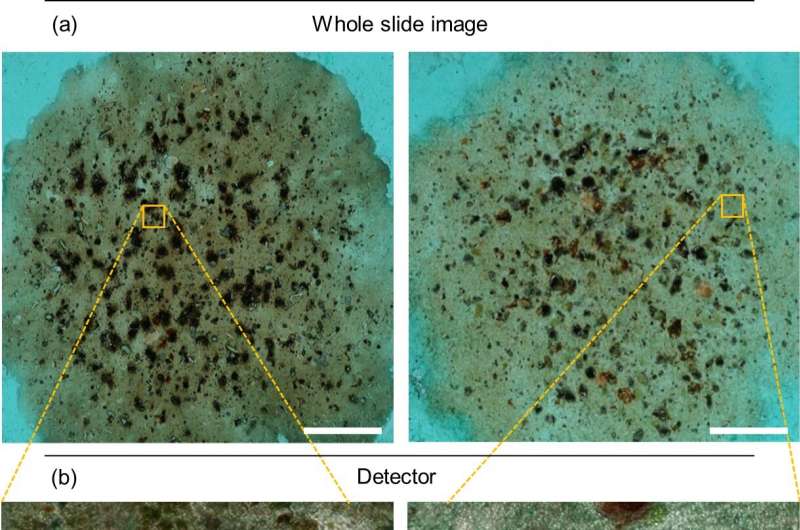Analysis of digitized whole slide images with the deep learning system. Panels showing (a) the digitized samples, (b) first step: localization of parasite egg candidates and (c) second step: classification of the parasite egg candidates into the soil-transmitted helminth and artifact categories. Credit: PLOS Neglected Tropical Diseases (2024). DOI: 10.1371/journal.pntd.0012041
A multi-institutional team of specialists is using artificial intelligence to diagnose parasitic infections in patients by scanning stool samples. Their study is published in the open-access journal PLOS Neglected Tropical Diseases.
Currently, the job of looking for parasitic worm eggs in stool samples falls to highly trained lab technicians. However, people living in places with no nearby labs or who do not have the money to pay for such tests tend to go untested. In this new study, the researchers wondered if an AI application could fill the void.
To that end, they trained and tested an AI application using 1,300 stool samples from children in Kenya. After local processing, the samples were digitally scanned using microscope cameras. The resulting scans were then uploaded to the cloud, where they were accessible for use by the AI app.
In their study, the research team focused exclusively on three types of parasitic infections, hookworms, roundworms and whipworms. Infections were diagnosed by the discovery of worm eggs in processed fecal samples.
Image-based artificial intelligence spots parasitic worm infections in children's stool samples. Credit: PLOS Neglected Tropical Diseases (2024). DOI: 10.1371/journal.pntd.0012041, CC-BY 4.0
The researchers found that the AI app was able to detect the presence of eggs in 76% to 96% of infections—the results varied due to the types of eggs involved. They also found that the app was not prone to finding eggs that were not there—it produced false identifications only 1% to 2% of the time. The team suggests the results are good enough for use in field testing.
The research team also noted that the AI analysis of a sample took just five minutes, though some results could take up to a half-hour when factoring in upload speed. They state that the AI app could be used anywhere there is network access and would be much cheaper than using lab technicians.
More information: Johan Lundin et al, Diagnosis of soil-transmitted helminth infections with digital mobile microscopy and artificial intelligence in a resource-limited setting, PLOS Neglected Tropical Diseases (2024). DOI: 10.1371/journal.pntd.0012041
Journal information: PLoS Neglected Tropical Diseases
© 2024 Science X Network

























